Chemistry and Society organized the symposium "Chemistry and Society" among the 35 proposed last July on the occasion of the IUPAC 2019 Congress which celebrated the centenary of the creation of IUPAC * in Paris.
* The International Union of Pure and Applied Chemistry (IUPAC) was founded in 1919 by academic and industrial chemists. IUPAC is interested in progress in chemistry, physical chemistry, biochemistry, etc. Its members are national chemical societies. It is the recognized authority for the development of rules for the nomenclature, symbols and terminology of chemical elements and their derivatives, standard methods for measurement, atomic weights and other data.
The symposium "Chemistry and Society" consisted of three sessions:
S4.1: Chemistry and Society - current knowledge
S4.2: Scientific outreach vs. teaching, perception and communication in chemistry
S4.3: Chemistry and Society - Intensifying the Dialogue
In partnership with the rectorat de l’académie de Paris, 17 conferences were recorded during sessions 4.1 and 4.2.
S4.1 Chemistry and Society: current knowledge
Ryôji NOYORI Nobel Laureate in Chemistry 2001, Nagoya University, Center for Research and Development Strategy, Japan Science and Technology Agency
A message from Professor Ryôji Noyori
Christophe SENE, Stepan
A continuum from hard legislation to soft legislation to social pressure: Is chemistry free to innovate under this straitjacket? How to dialogue between stackholders?
Diane PURCHASE, Middlesex University, UK
E-waste - an emerging 21st century global grand challenge: Global occurence, chemical properties and ecological impacts.
Leonardo PANTOJA MUNOZ, Middlesex University, UK
Microplastics and wet-wipes: Should they be flushed into the sewer system?
Liz HARRIMAN, TURI, University of Massachusetts
Toxics Use Reduction - reducing hazard benefits society and the value chain.
Michel CLAESSENS, European Commission, Directorate for Energy, ITER
On behalf of Martin W. BAUER, London school of economics
The public understanding of chemistry, does it differ from perceptions of science in general?
Nicolas CUDRE-MAUROUX, Solvay group
Facts, science and emotions.
Rogiero TELES, Instituto Federal do Maranhão - IFMA, São Luís, Brazil
Regional chemistry Council of the 11th region as a way to ensure the supply of good products and services to society.
S4.2 Scientific outreach vs teaching, perception and communication in chemistry
Carla MORAIS, Universidade do Porto
Chemistry by the letter: Etymology as root and route for science communication.
Corinne ARROUVEL, Universidade federal de São Carlos, Sorocaba
The wave-matter duality in music
Didier PERRET, Chimiscope, Université de Genève
Needs of a new chemist's role model for novice Citizen.
Elisabeth RASEKOALA, African Gong
Advancing chemistry education and communication in Africa : Challenges and prospects for transformation in policy, practice and capacity-building.
Fabienne CRETTAZ VON ROTEN, University of Lausanne
Chimists' public engagement in Switzerland: representations, practices, incentives and barriers.
Karine BICHET-RAMON, académie de Toulouse and IRES
Critical skills for students
Martin WALKER, State University of New York
Making chemistry open and affordable through technology and Open Educational Resources (OER)
Polina MIKHEL, Université de Lorraine
Towards a multilingual resource on the language of chemistry: A lexical network approach.
Awards ceremony
Ganna LYASHENKO and Jean-François NIERENGARTEN
Artwork competition of Chemistry: A European Journal celebrating the 150th year of the Periodic Table.


